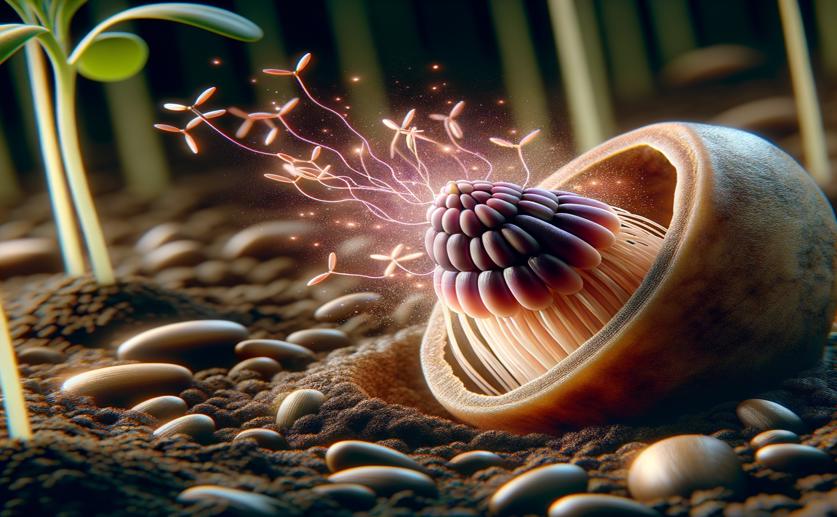
Enzymes Transform Acid in Purple Coneflower Seed Sprouting
Jim Crocker
28th April, 2024

Image Source: Natural Science News, 2024
Key Findings
- Study at Sichuan University found how purple coneflower seeds convert chlorogenic acid during germination
- An enzyme named CAS turns chlorogenic acid into chicoric acid, with an intermediate compound formed in between
- This process is crucial for the seedling's growth, as too much chlorogenic acid can inhibit root development
References
Main Study
1) SCPL acyltransferases catalyze the metabolism of chlorogenic acid during purple coneflower seed germination.
Published 26th April, 2024
https://doi.org/10.1111/nph.19776
Related Studies
2) Chlorogenic acids and the acyl-quinic acids: discovery, biosynthesis, bioavailability and bioactivity.
3) Plant Secondary Metabolites as Defenses, Regulators, and Primary Metabolites: The Blurred Functional Trichotomy.
4) Caffeoylquinic acids: chemistry, biosynthesis, occurrence, analytical challenges, and bioactivity.



 4th April, 2024 | Jim Crocker
4th April, 2024 | Jim Crocker